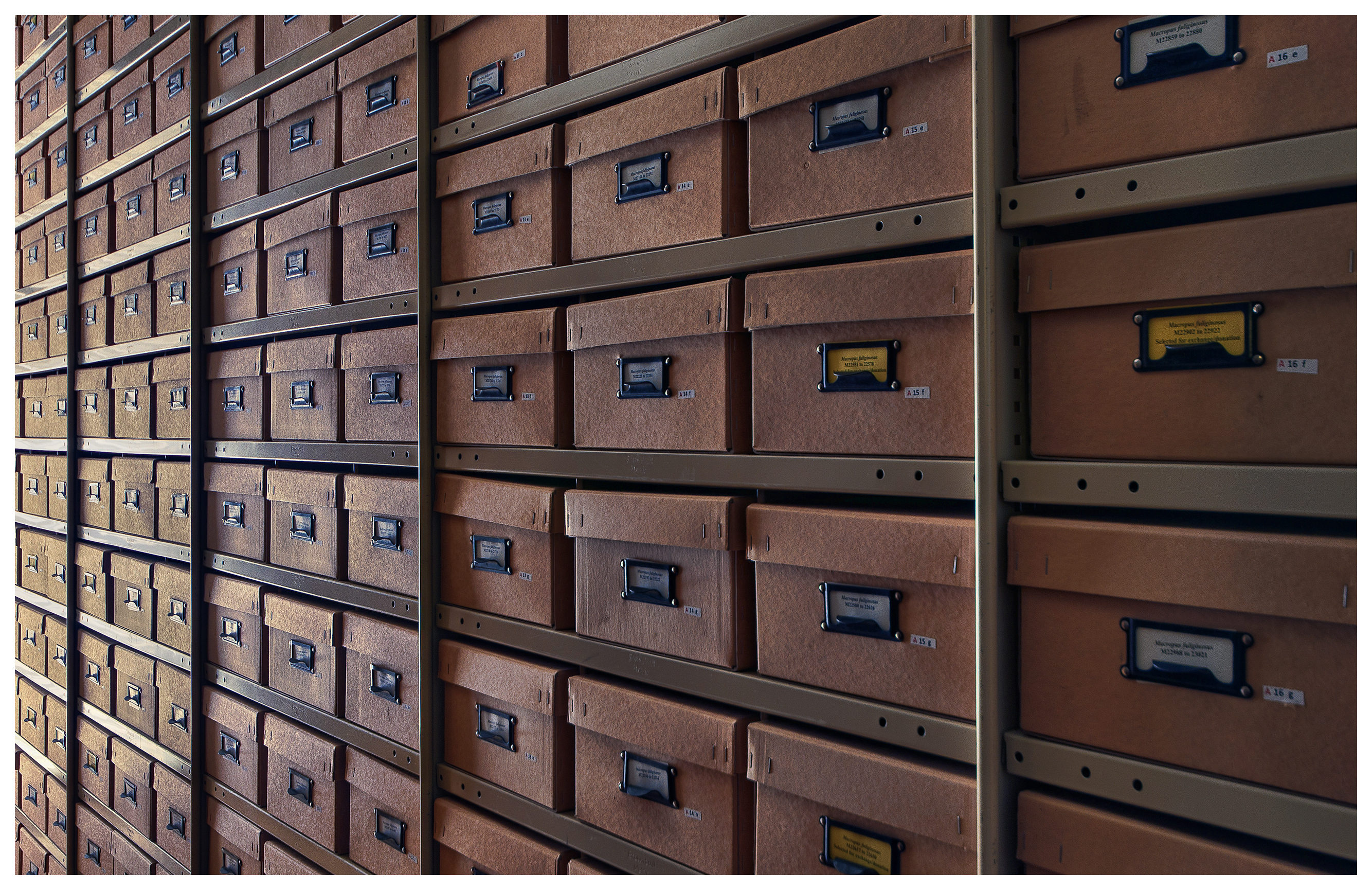The early days: 1950s to 60s
The ANWC was officially born in 1966.
Wildlife study in Australia was rapidly growing from the late 1950s and through the 1960s, as our researchers were attempting to establish baseline information on the wildlife of Australia.
A number of key expeditions brought back hundreds of new specimens of birds and mammals at a time.
By the mid-1960s, CSIRO held around 8800 bird and 8500 mammal specimens carefully collected and preserved, but had nowhere central to store them.
The birth of the collection was marked by a decision in late 1966 to consolidate this growing number of specimens into one location.

Expanding to become a national heritage: 1970s
Throughout the 1970s, the collection expanded as a series of faunal surveys were undertaken and a reptile and amphibian component was also built.
The mammal collection expanded as research proceeded into mammalian 'pests' such as dingoes, wallabies and kangaroos. This included the discovery of the western species of grey kangaroo, today known as the Western Grey Kangaroo (Macropus fuliginosus).
Collections were also made of feral pigs, foxes and feral cats.
The collection was now being recognised as a valuable national resource.
In April 1976, it was formally recognised by its gazettal as the Australian National Wildlife Collection (ANWC) by the Commonwealth Government. This recognition cemented its status as a natural heritage.
Emerging fields and state-of-the-art facilities: 1980s to today
In the mid-1980s, the ANWC established its role in the emerging field of molecular systematics in which information from DNA is used to understand evolution.
New collections were made to create a cryo-frozen tissue bank and the ANWC now holds the world's largest tissue bank of Australo-Papuan birds.
The ANWC is held at CSIRO in Canberra and includes:
- two large climate-controlled vaults for mammal and bird skins
- compactus storage for specimens preserved in spirits
- state-of-the-art preparation facilities
- a dedicated vault for the vertebrate skeletal collection.
We maintain international best-practice methods for all forms of specimen preservation techniques, including cryo-frozen tissues.
The early days: 1950s to 60s
The ANWC was officially born in 1966.
Wildlife study in Australia was rapidly growing from the late 1950s and through the 1960s, as our researchers were attempting to establish baseline information on the wildlife of Australia.
A number of key expeditions brought back hundreds of new specimens of birds and mammals at a time.
By the mid-1960s, CSIRO held around 8800 bird and 8500 mammal specimens carefully collected and preserved, but had nowhere central to store them.
The birth of the collection was marked by a decision in late 1966 to consolidate this growing number of specimens into one location.
Expanding to become a national heritage: 1970s
Throughout the 1970s, the collection expanded as a series of faunal surveys were undertaken and a reptile and amphibian component was also built.
The mammal collection expanded as research proceeded into mammalian 'pests' such as dingoes, wallabies and kangaroos. This included the discovery of the western species of grey kangaroo, today known as the Western Grey Kangaroo (Macropus fuliginosus).
Collections were also made of feral pigs, foxes and feral cats.
The collection was now being recognised as a valuable national resource.
In April 1976, it was formally recognised by its gazettal as the Australian National Wildlife Collection (ANWC) by the Commonwealth Government. This recognition cemented its status as a natural heritage.
Emerging fields and state-of-the-art facilities: 1980s to today
In the mid-1980s, the ANWC established its role in the emerging field of molecular systematics in which information from DNA is used to understand evolution.
New collections were made to create a cryo-frozen tissue bank and the ANWC now holds the world's largest tissue bank of Australo-Papuan birds.
The ANWC is held at CSIRO in Canberra and includes:
- two large climate-controlled vaults for mammal and bird skins
- compactus storage for specimens preserved in spirits
- state-of-the-art preparation facilities
- a dedicated vault for the vertebrate skeletal collection.
We maintain international best-practice methods for all forms of specimen preservation techniques, including cryo-frozen tissues.
